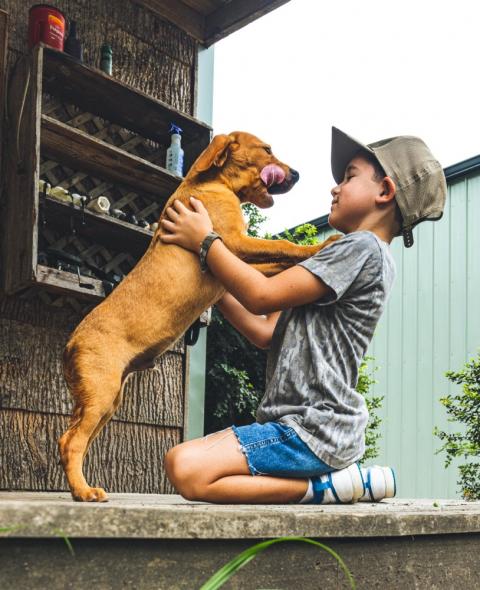Written by Butch Barnes
Making Tube Calls is A Time Honored Turkey Pastime
My maternal grandmother often reminded me that my first words were, “Do it self!” whenever someone tried to show me how or help me do something. I sadly admit that it carried over to adulthood, sometimes out of necessity, and it probably will not end until I move into a nursing home. From slingshots, small rocket-powered boat (bottle rocket strapped to back), Osage orange bows, atlatls, boomerangs, the list goes on. But I’ll skip ahead and conclude with turkey calls, or more specifically, tube calls, beginning with the original – the half oz. snuff can.
Back in 1973 when I moved from Mobile to Wilcox County in Alabama – known as a turkey hunting heaven – I discovered that my neighbor, Gene Handly, was not only a great turkey hunter, he was also a championship caller – and a practitioner of the snuff can call! He quickly became my mentor. He had picked up the art from William Harris, who owned a country store down the road at Possum Bend. Mr. Harris was well-known for his paintings of turkeys, as well as rustic scenes from “back in the day”, most framed in genuine barn wood.
Make a Tube Call Out of an Old Snuff Can
Somewhere along the way, Mr. Harris had changed the way snuff cans were transformed into turkey calls compared to the Quaker Boy method. He inverted the can and punched two thin slices in the lid with a pocket knife, forming a “V” in the center of the lid. He then cut the half-moon hole in the top (previously the bottom) with a knife by first scribing a straight cut-line across the halfway mark of the can bottom.
After cutting around the edge of one half of the can to the ends of the scribe, it leaves a jagged half-moon piece. This is removed by placing one thumb inside the can against the underside of the scribe line, and pushing down on the cut piece with a finger from the other hand. By working half-moon piece back and forth to the inside, it will soon break off, leaving a smooth edge on the outside edge where it contacts the lip.
When Duct Tape started being produced with camo patterns, I began covering my cans with it. I also spray-painted the lid (now the bottom of the call) with a flat, grainy, brown spray paint from Walmart. It looks like dirt and totally eliminates glare. When applying the tape, start just below the top lip at the latex end to leave room for the O-ring that holds the latex in place. Trim the excess tape off the bottom with knife or scissors.
To really boost the sound volume, cut the camo tape around the can at the edge of the lid with a razor blade or sharp knife, making the lid removable. Taking the lid off will give the call maximum volume, and it is really loud! For finer adjustments, remove the lid and press the “V” inward to be louder and nearer to closing it for softer tones, and place it back on the call. Low tech at its best! On my calls, I also changed from the “V” cut to a bored ¼” bored hole and I change volume by changing the force of the air going between latex and lip.
You Can Make a Tube Call from Pill Bottles, Wood, Bone, Cow Horn, Film Tubes, and More
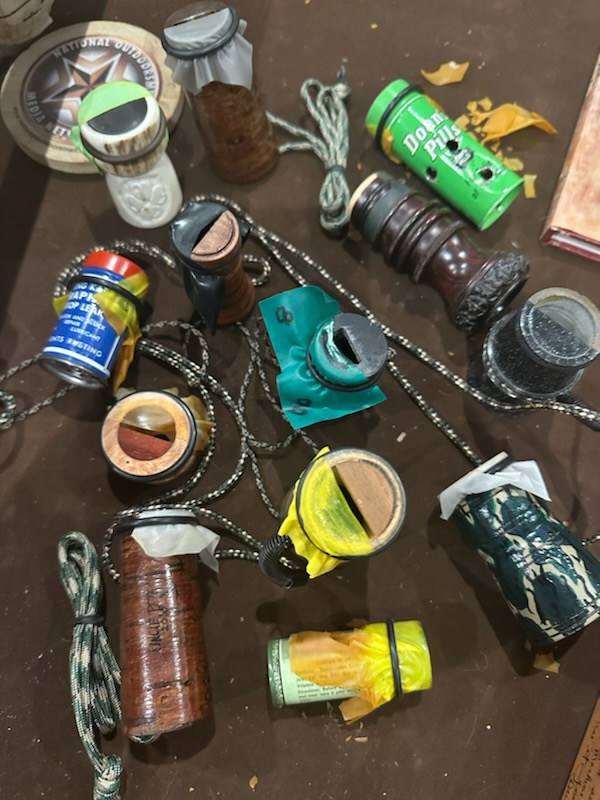
When I discovered in 2006 that the cans were about to be history, I started to experiment with other materials. The obvious ones were those that were already hollow – bamboo, bone, cow horn, brass or copper tubing, PVC, 35mm film tube, and plastic pill bottles. Getting sucked into this “hobby” soon turned into a passion. I built a little 12’x12’ shop, bought the necessary tools (my story and sticking to it!), and commenced making calls out of correctly sized saplings of various species cut in the winter to reduce dry cracking. I then commenced to the world of exotic, beautifully figured hardwoods, of which there is no end.
For those who want to make their own tube calls, I recommend starting with the bamboo, 35mm film tubes, small plastic Tylenol bottles, PVC tubing etc. There is little to no expense with these – no shop equipment required –and very little expense for glue and latex. Metal tubing requires special equipment (soldering, brazing, etc. If the entrepreneur decides to move on to wood – saplings and blocks of cut, sized, and dried blocks – he will need a band saw, table saw, sander and sand paper, drill press, forstner bits (see hole sizes above), and a Dremel with attachments. Other than these, there’s not much to buy, other than a power-equipped shop.
DIY Wooden Tube Call Measurements and Parameters
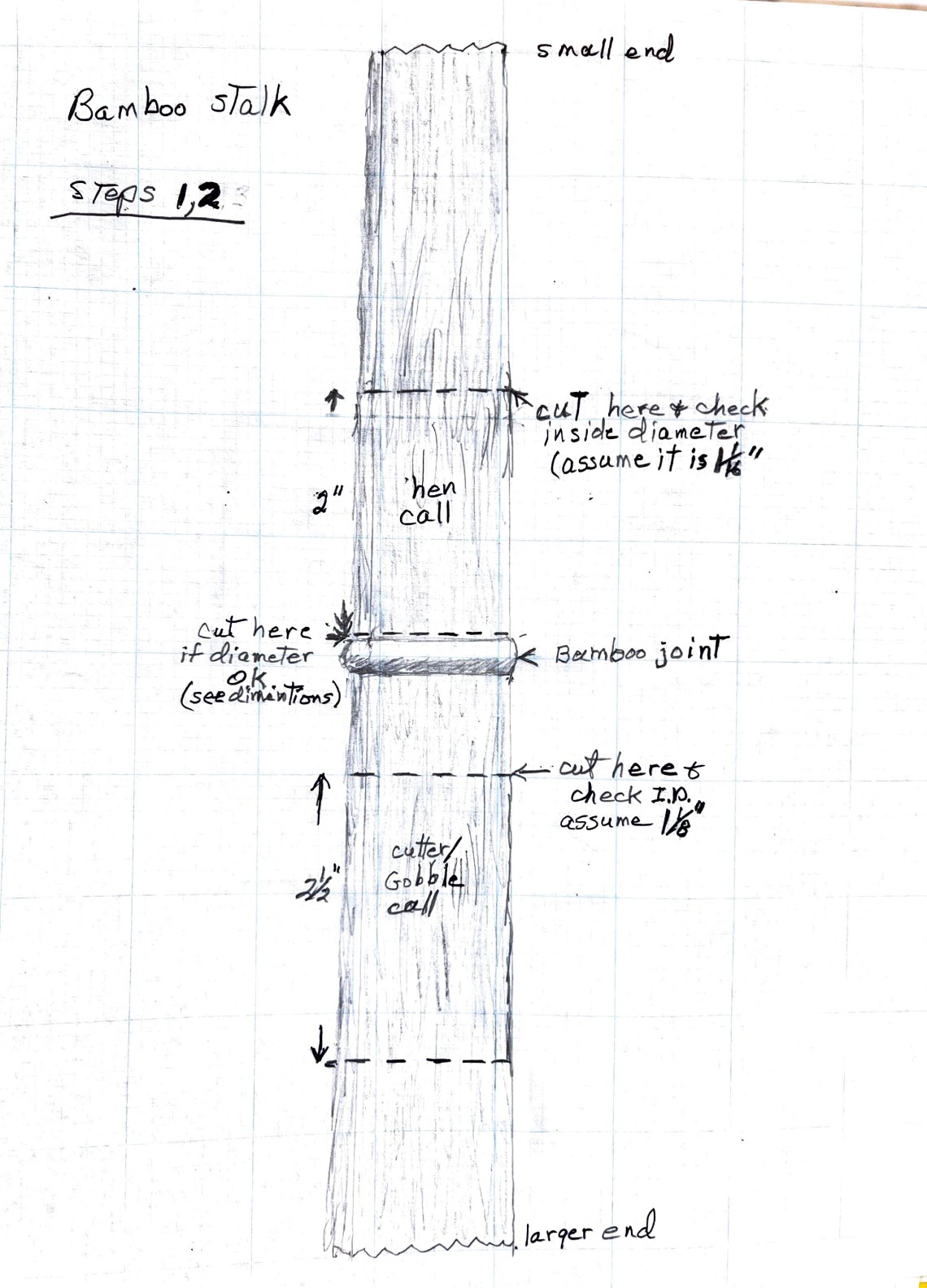
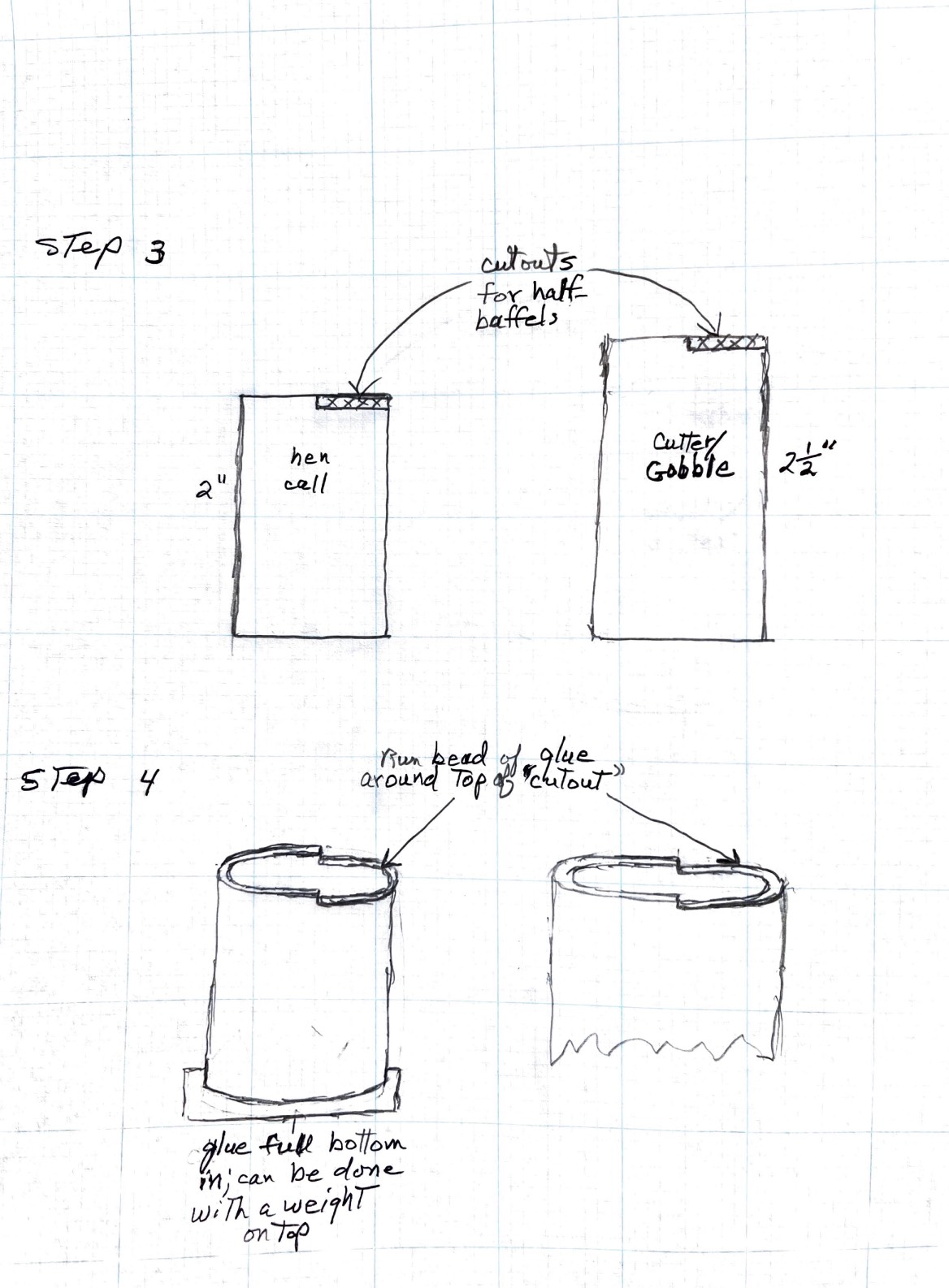
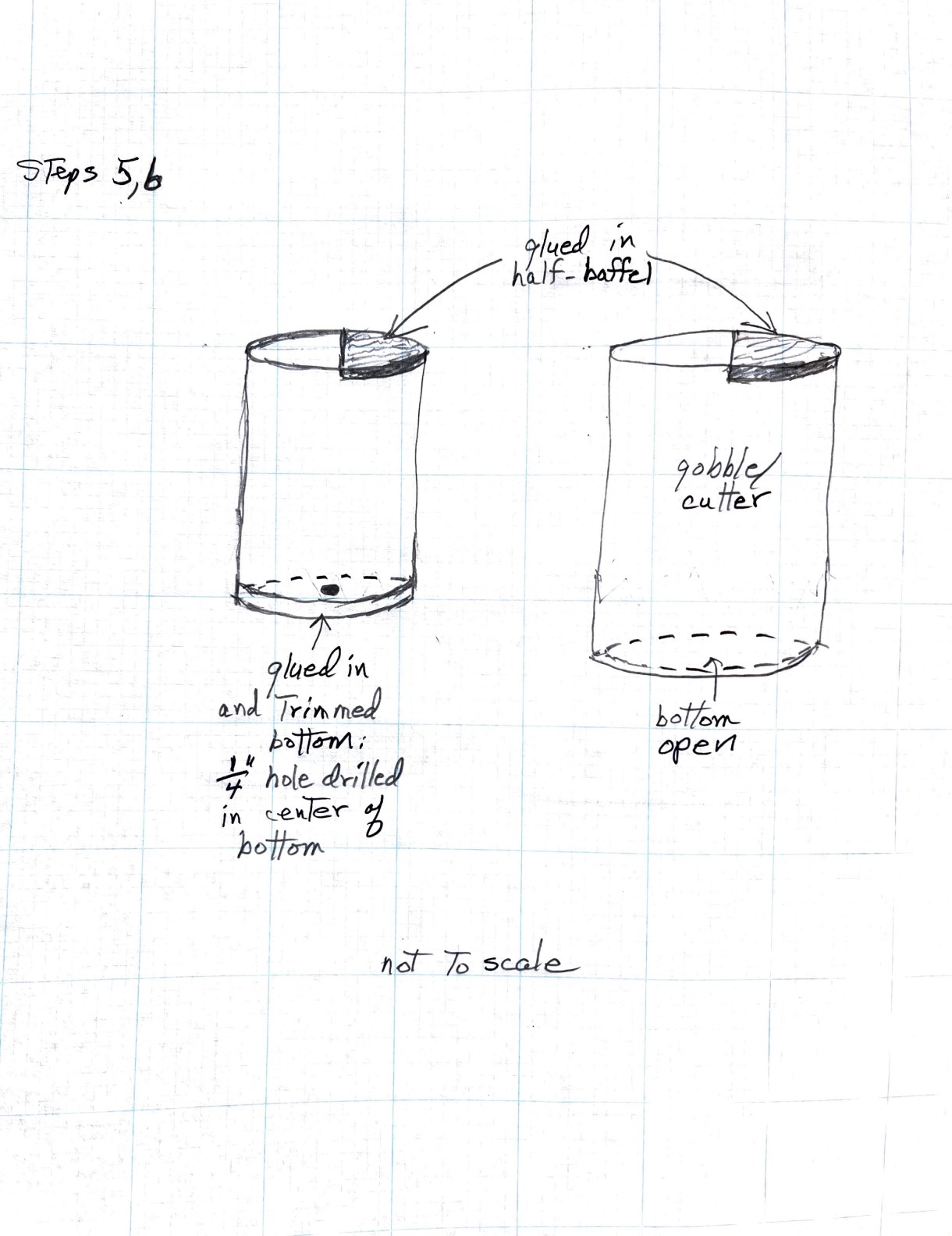
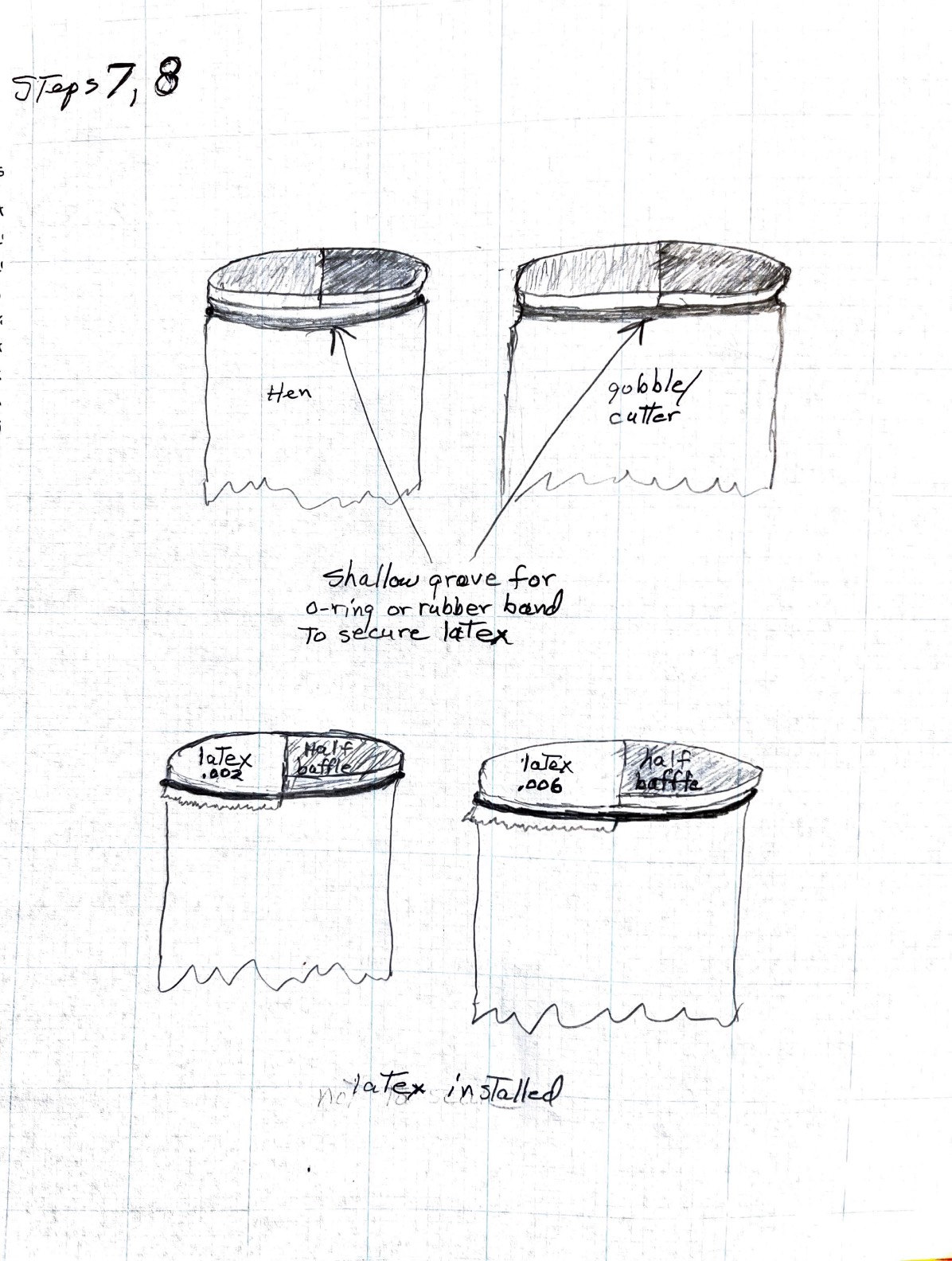
Looking now at my experiences making calls from other materials, for starters, size does matter. After years of experimenting, it became obvious that for hen sounds, the diameter and length of the snuff can was very important in achieving the proper pitch and tone, and those of the snuff can were dead-on for hen sounds. I test my calls by comparing their sound to that of the wild turkey sound recordings on the NWTF web site.
To make a wooden call for hen sounds, the wood blank should be thick enough to accommodate a 1” to 1-1/16” diameter hole, while leaving a wall about 1/8” thick. When coring the wood, leave a base 1/8” think and bore a 1/4” hole in the center of the base. You can also glue on a 1/8” thick base and rasp or sand the edge to align with the tube. The height of the call should be from 1-3/4” to 2”. The most accurate hen sounds are made using .002 latex, also known as prophylactic latex. Open-bottom gobble/cutting tube calls use .006 latex for a deeper tone.
The gobble/cutter tube cavity at the top should be 1-1/8” to 1-1/4” diameter, requiring a little thicker tube, and height can be from 2” to 2.5” – slightly longer than the hen call. The bottom inside diameter can be from the same as the top or even wider, since it is completely open. Both hen and gobbler wooden calls require a half-moon baffle in the top, counter sunk by trimming 1/8” off half the top on the side where it will be glued. This forces all the air and sound out the bottom and prevents a “muffling” of the sound.
To back up a moment, back in the 1980’s I started another hobby – drawing turkeys – that evolved into painting turkeys. With the success of the lathed, highly figured calls, I pulled the two “hobbies” together and began painting a turkey bust on each exotic wood call. They proved to be quite popular as gifts and contributions to fund raisers – county NWTF auctions, fundraising auctions for needy families, etc. This has been far more rewarding than simply selling them.















